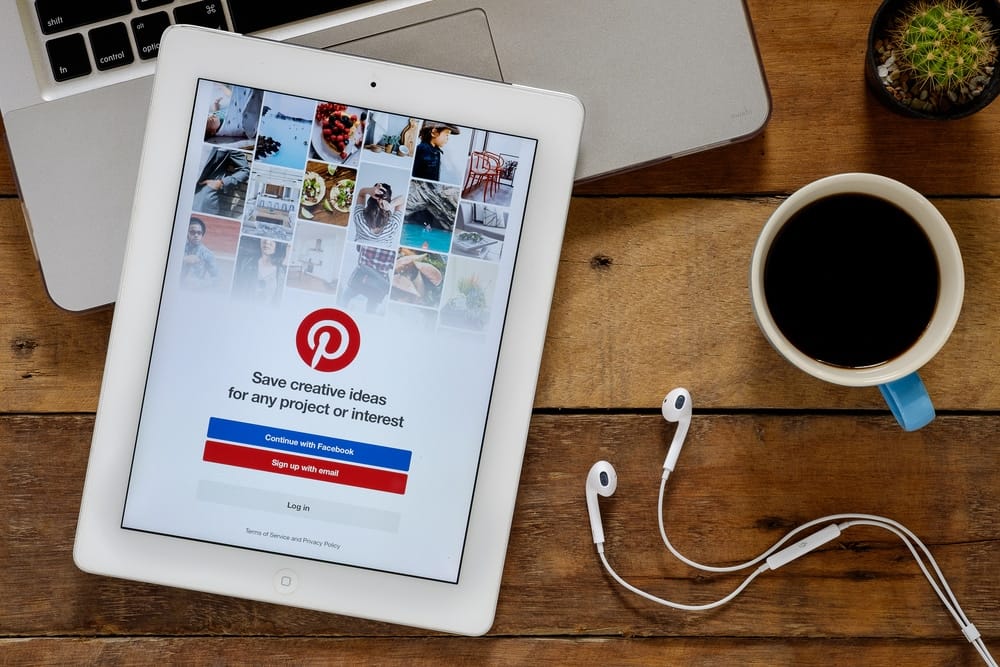With over 459 million monthly active users looking for information on Pinterest, understanding how it works will help new bloggers gain inspiration, grow their audience, and drive traffic to their blog.
Why You Should Use Pinterest to Gain Visibility (Plus Some Amazing Stats!)
Statistics tell us what’s working and what’s not, and the stats are massively in favor of Pinterest as a tool for business growth.
Your Target Audience is on Pinterest
Pinterest is growing fast, with over 100 million users added in 2020 alone.
Until recently, Pinterest users were predominantly female, but that's changing, and the gap between male and female users is narrowing, with 60% female and 40% male.
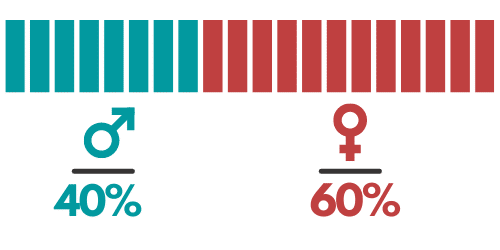
It has a healthy spread of age groups with the 30-49's being the largest group, accounting for 35% of users.
Significantly, this age group makes a lot of online purchases 🙂
Direct Traffic to Your Blog
When you pin an image, Pinterest automatically generates a link from your website or blog.
Users on Pinterest are often in the early stage of searching for information and unlike other social media platforms where users can be hesitant to leave, Pinterest users are eager to explore websites that offer valuable content based on their interestsPinterest Users are Action Takers
Pinterest users take action.
No matter what you are selling or promoting on your blog, the chances are your audience is looking for it on Pinterest, and 87% of users state that they've purchased a product or service after first seeing it on Pinterest.
Even better, 40% of users have a household income of $100K or more per year. It's a segment of the population with money to spend!
How Does Pinterest Work?
Setting up a Pinterest profile is simple.
You can either create a personal profile or a business profile. It is also possible to convert an existing personal profile to a business profile.
Bloggers should use a business account in order to get access to data and statistics for pins and followers.
To create a business account, go to pinterest.com/business/create.
Next, you’ll be required to fill in details about your business, industry, etc., And you’re in!
Pinterest Terms You Should Know
Pin: This is the Pinterest equivalent of a post. All content shared on Pinterest is a pin – i.e., ideas to inspire you. When you click on a pin, it links back to a page on a website/blog.
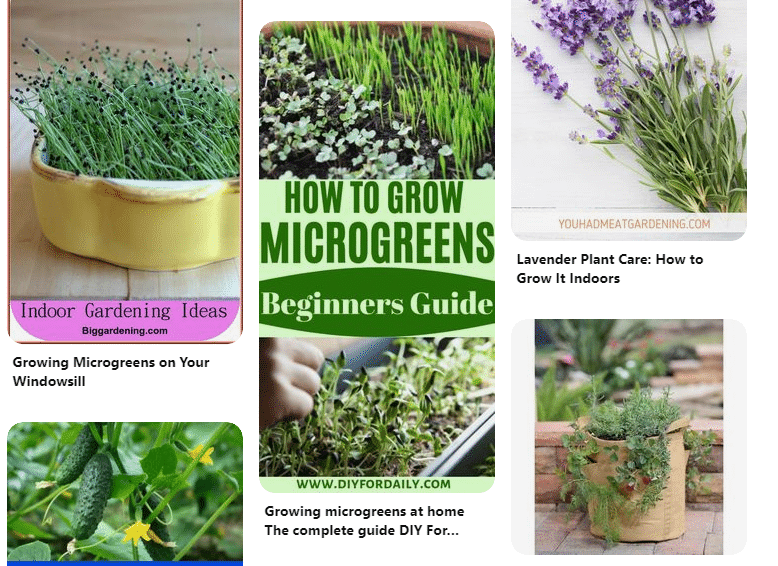
Pinterest Search: The Search feature of Pinterest makes Pinterest work like a search engine for images. When you use the search option, the search results pull thousands of pictures from different Pinterest users. Users use this feature to look for information about a topic or a product.
Pinners: The name given to Pinterest users.
Boards: Visual categories that help you organize your pins. The same way you group similar topics on your blog, that’s what you do with boards.
For example, a Finance blog on Pinterest might have Saving tips, Investment ideas, Becoming Debt-free, as different boards on Pinterest.
Group boards: The same as regular boards, but more pinners can contribute to them. The board owner will usually send an invite to other pinners, inviting them to add to the group board.
Archived boards: When you archive a board, it won’t show to those who follow you, and you will no longer see suggestions related to that board. It is almost like opting out of a newsletter or muting content on other platforms.
Feed: Similar to Facebook or Instagram feeds, this is a group of pins from people you follow or pins that Pinterest thinks you'd be interested in based on your previous searches.
Hashtags: Hashtags make it easy for other pinners to find your pins and relevant content.
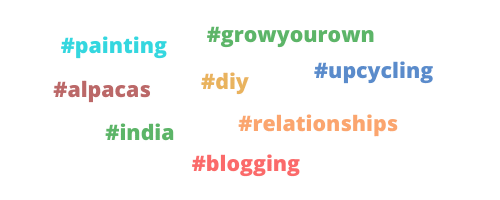
Save: This is an action carried out on a pin. When you click on a pin, you have the option to save, send or hide. When you save, you pin it to one of your boards
Lens: This Pinterest feature uses your smartphone's camera to suggest pins based on the pictures you take. For example, if you snap a picture of an outfit, you'll be shown pins of similar outfits.
Rich Pins: Pins that include extra information right on the Pin itself. There are five types of rich pins: movie, recipe, article, product, and place.
Place Pins: Allows local providers to share their business address, telephone number, images of products/services they offer, etc. Ideal for businesses with an offline presence, such as hospitality.
Pinterest Vs Other Social Media Platforms
Content Share vs Content Discovery
Even though Pinterest and Instagram are both visual platforms, they are used in different ways. Instagram is used to share a user’s content (images and videos), while Pinterest is used to curate and save content often uploaded by other users.
User Focused
Pinterest is designed to provide the best information to its users. The emphasis is placed on “what,” for example, places, outfits, shoes, advice, etc. Things that pinners would search for.
Relevance Over Time
Other social media platforms organize content mainly according to when the content was posted, and the interaction (likes and comments) is based on the sentiments of users. In contrast, Pinterest is almost like a visual bookmarking site where you can save information about things that interest you. Information (pins) can be saved indefinitely.
Search Engine Optimized Content
With the use of hashtags, other social media platforms perform relatively well but Pinterest boards are built so that pinners find what they are searching for more naturally since real people instead of algorithms curate the boards.
Traffic to Your Blog
Every pin can link to a web page. It's impossible to do this on Instagram, and it's frowned on by Facebook and restricted on Twitter.
Pinterest loves links, and if the pin contains relevant information, pinners are likely to follow the link to your blog.
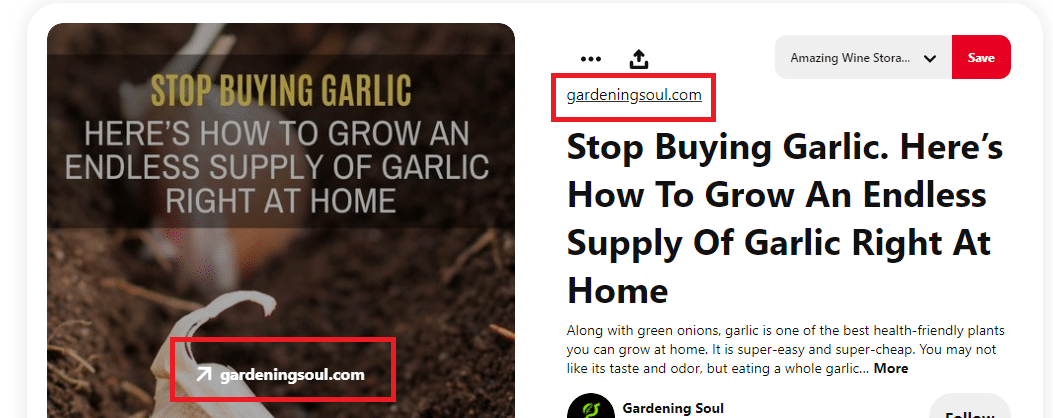
The Ideal Pinterest Content: How to Create a Successful Pin
A successful pin is a pin that gets seen and shared by Pinterest users.
Firstly, ensure that the content you want to share is relevant to your target audience. (Remember the relevance feature of Pinterest? Yes.)
Relevant content. Check.
Step 1 - create a board.
Pins are added to boards and you can have as many boards as you like.
On your Pinterest account dashboard, click your profile icon at the topClick the ‘+’ icon and select ‘Board’
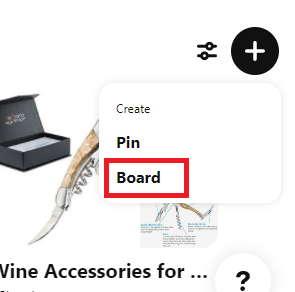
Try coming up with something creative as the board name. In the example below, the board could have called ‘Wine Bottle Labels’, but that would have sounded a bit plain and uninspiring!
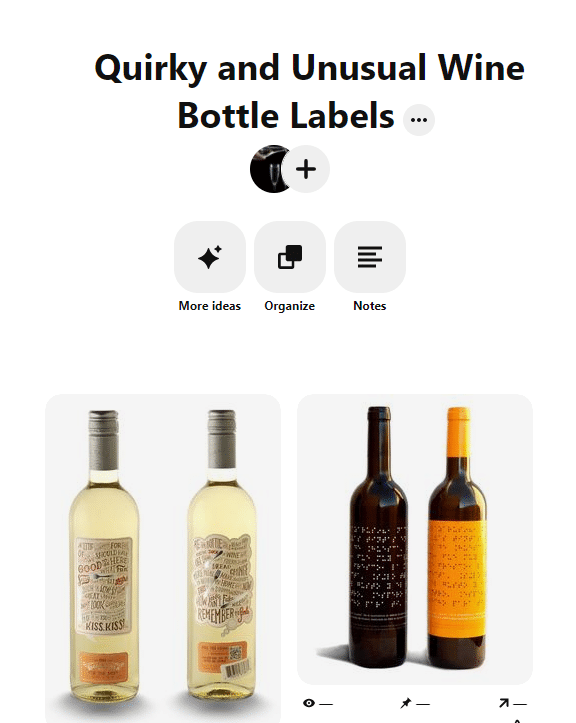
Once you’ve decided on a name for the board, click ‘Create’.
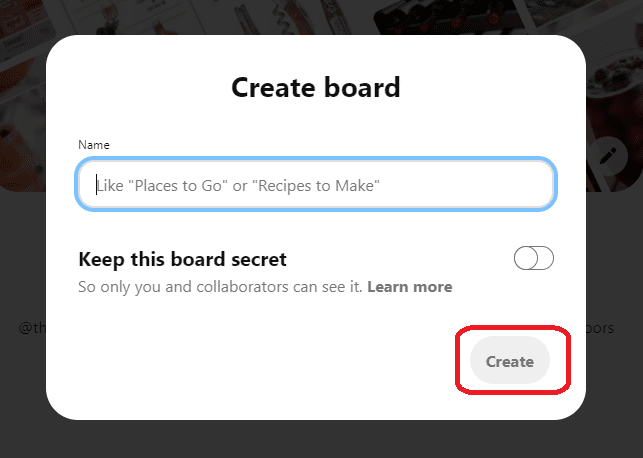
Step 2 - Create the Pin
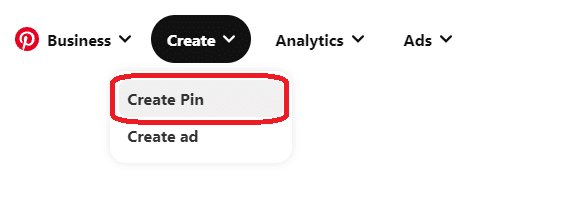
Choose the board you just created, or, if it doesn't resonate with the pin's topic, you can create a new board.
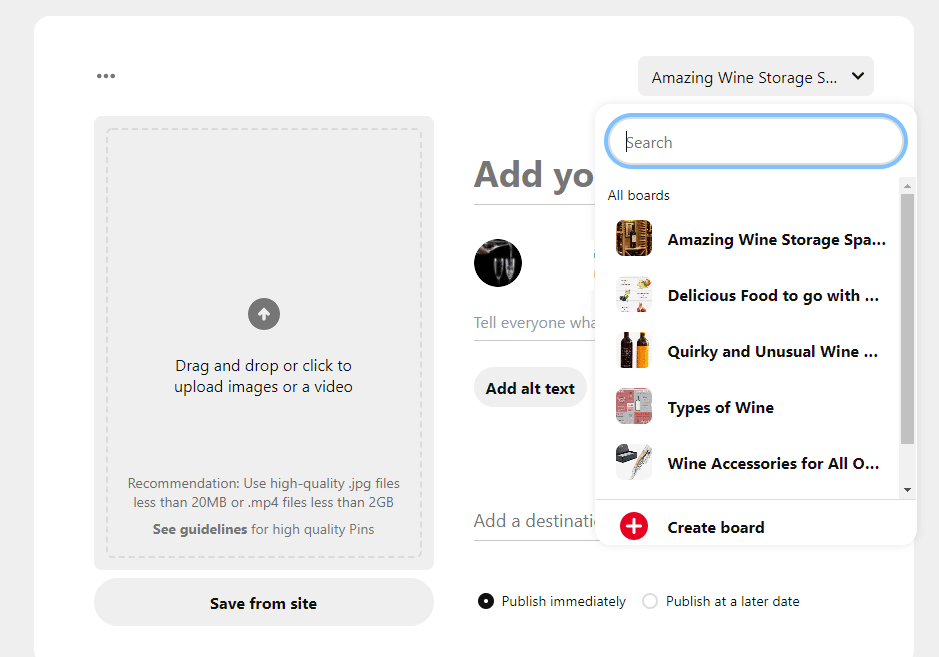
Step 3 - Upload the image
To create a successful pin, you should use high quality images. Pinterest recommends a minimum of 600 x 900 pixels and an optimum size of 1000 x 1500 pixels.
Step 4 - Add a title and description
Add the title of the Pin and in the description below, write out a summary of what the pin is about. You can use search terms that users might enter in a typical search. For example, if the pin is an image of a mural for a child’s bedroom, you could include relevant terms such as ‘wall mural’, ‘bedroom mural’ ‘kids wall art’ etc.
Step 5 - Add hashtags
Add relevant hashtags to help users find your pin. Pinterest recommends using specific hashtags, but you could also add one or two general hashtags as well.
Step 6 - Add the alt text
Alt Text is the text that is displayed instead of an image. It's useful for both search engines and visually impaired individuals. You would describe the image in a short phrase or sentence. For example, 'children's bedroom mural.'
Step 7 - Add the destination link
This is the link that directs users to a page on your blog when they click on the pin.
Ready-Made Templates
Tools like Canva allow you to easily create unique and interesting images using ready-made templates.
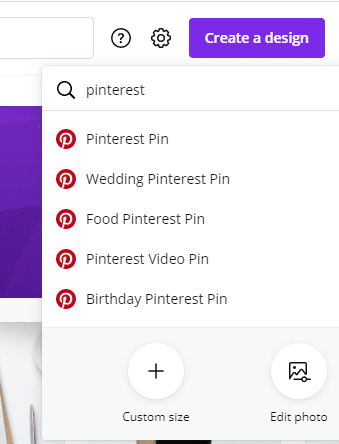
Driving Traffic from Pinterest to Your Blog
Once you've created at least one board and added some pins, it's worth spending a few minutes to make sure those boards and pins are optimized for generating traffic to your blog.
Create Multiple Pins for the Same Blog Post
You can create different pins that highlight various aspects of your blog post and publish them to Pinterest. Doing so can help you target different keywords and search terms on Pinterest.
Use a Call-to-Action
It is easy to assume that when people see a catchy headline on a pin, they will naturally click the link. No, not so easy.
Tell people the next step you want them to take and make it easy for them to understand. However, avoid saying things like 'click here' or 'go here'. Instead, be a bit more subtle about it.
For example,
"Read about how I turned my unruly rescue dog into a loyal, well-behaved friend."
Brand Your Pins
There are millions of pinners on Pinterest, so it helps to have consistency with your pins.
The fonts you use should be more functional than fancy. Users should be able to read the title of your pin easily as they scan the platform.
It is also a good idea to have your website link branded on every pin so that users can identify with your brand whenever they see it.
Add Pinterest to Your Share Buttons
Most blog posts have share buttons either at the top of the content, at the bottom, or floating at the side.
You can include a Pinterest button there, and anyone (with a Pinterest account) who reads your blog post can share it to Pinterest as a Pin, increasing your chances of more traffic.
Verify Your Website
In case you have not yet switched to a Pinterest business account, this is a good time to do so because having a business account allows you to verify your website/blog.
Without verification, you will not have access to Pinterest analytics. To get this done, go to your account page and click to unlock business tools. You will be required to submit the URL of your blog and choose the type of business you represent.
After verifying, you will also be able to create Pinterest ads and sponsor your content or services to the Pinterest audience.
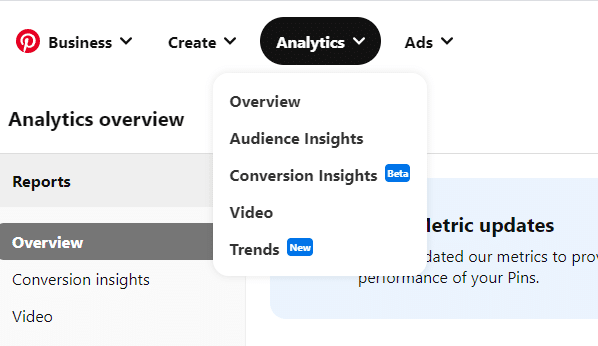
Pin Regularly
Like every other social platform, you should pin as often as you can. Create a schedule so that your followers know when to expect to see your pins.
Using analytics, you can discover the best times to post so that your followers see your pins.
Automation tools like Tailwind can help you schedule pins and set up a pinning calendar.
How do I Earn Money with Pinterest?
Statistics show that Pinterest drives 3.8 times more sales than other social platforms.
So, as a blogger, how does it help you to earn money?
Your Own Products or Services
If you have a shop integrated on your blog or sell from an Etsy page, you can create pins about the product and add a link to the pin for users to click on and make a purchase. Bloggers who sell digital products, such as e-books, can also use pins in the same way.
Case studies and testimonials make great pins for service-based businesses because they help to provide credibility and trust.
Affiliate Products
Affiliate marketing is earning commissions for sales made when you recommend products, services, courses, or programs you love and trust to your audience.
If you promote affiliate products on your blog, you can create pins that direct users back to a post that talks about the affiliate product/service
Create posts about why you love/use the products and then add the affiliate link as a call to action*. You could even create a 'comparison' post that lists and discusses two or more similar products.
For example:
Hatchimals V LOL Surprise. Which is Better?
The key is to ensure that you promote only products/programs that your target audience is interested in or aligns with the content you are known to share.
*A 'call to action' or CTA for short, tells the user what to do. ‘Buy Now’ is a simple example of a CTA.
Advertising Space
Bloggers often use ad networks like Google AdSense, whereby relevant ads are displayed on your blog, and you get paid when your visitors click on those ads.
So when you send traffic from Pinterest to your blog and have an ad there, the more your ads are seen and clicked on, the more you earn. It's possible to earn an extra $50 - $200 per month, sometimes more.
Work as a Pinterest Virtual Assistant
This is not you working for Pinterest as an employee!
You can offer Pinterest management services to other business/website owners helping them create pins from their blog posts and other content. Most small business owners don't understand the Pinterest platform or have the time to create pins and boards. You can do this as a side hustle for a fee.
Pinterest can be your best ally. Implement the tips in this post and you’ll be well on your way to driving thousands of visitors to your blog, and making some sales too!
Frequently Asked Questions
Is Pinterest suitable for all kinds of businesses?
Almost any kind of business. Especially if you regularly create new content for your blog. The Pinterest audience is growing wider and is no longer a completely female-dominated platform.
As with every social platform, some things cannot be promoted on Pinterest. It's unlikely that you would be affected by these restrictions, but just in case, here's a list of the main ones:
Adult (X-rated)
Drugs (including prescription drugs)
Alcohol
Weapons
Live animals (including pets)
Counterfeit goods
Gambling
Loans/Credit cards
Healthcare services
Can I share my Pins on my other social media accounts?
Yes, you can share pins directly to Facebook, WhatsApp, and Twitter
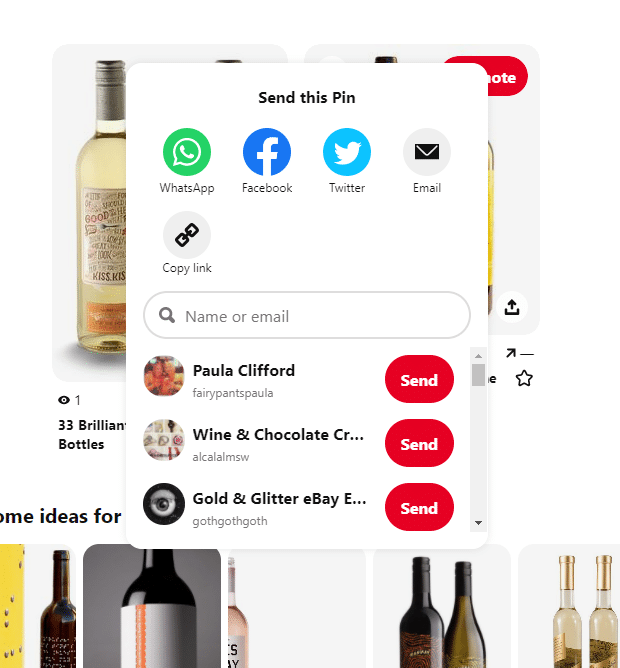
Can poor quality images get disapproved on Pinterest?
Not really. Your pin can get reported for using copyrighted images but using images with poor quality will only reduce the number of users who will be attracted to the pins you share.
Can I get followers on Pinterest?
Absolutely. Users will follow you if they love the content you pin. They will often repin your pin to their boards, helping you gain even more visibility and followers.
Can I pay to promote my Pins?
Yes. With a business account, you can promote your pins to the Pinterest audience by using ads.
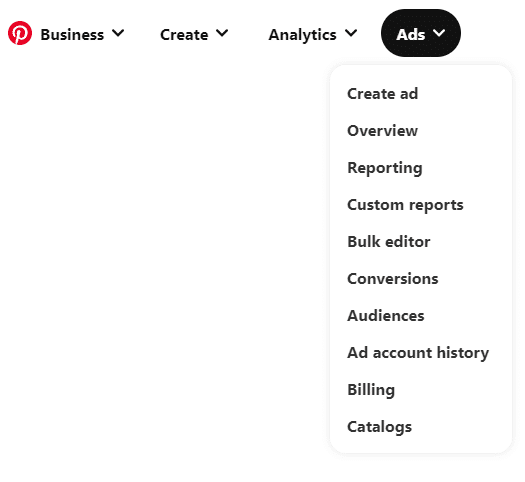
Keep in mind that paid ads can be costly, and you might not get a result unless you know what you're doing.
Considering how responsive Pinterest users are, it's usually more productive to use free strategies until you've had the chance to really get to know the Pinterest platform.
All the strategies and tips discussed in this post are 100% free to implement.

